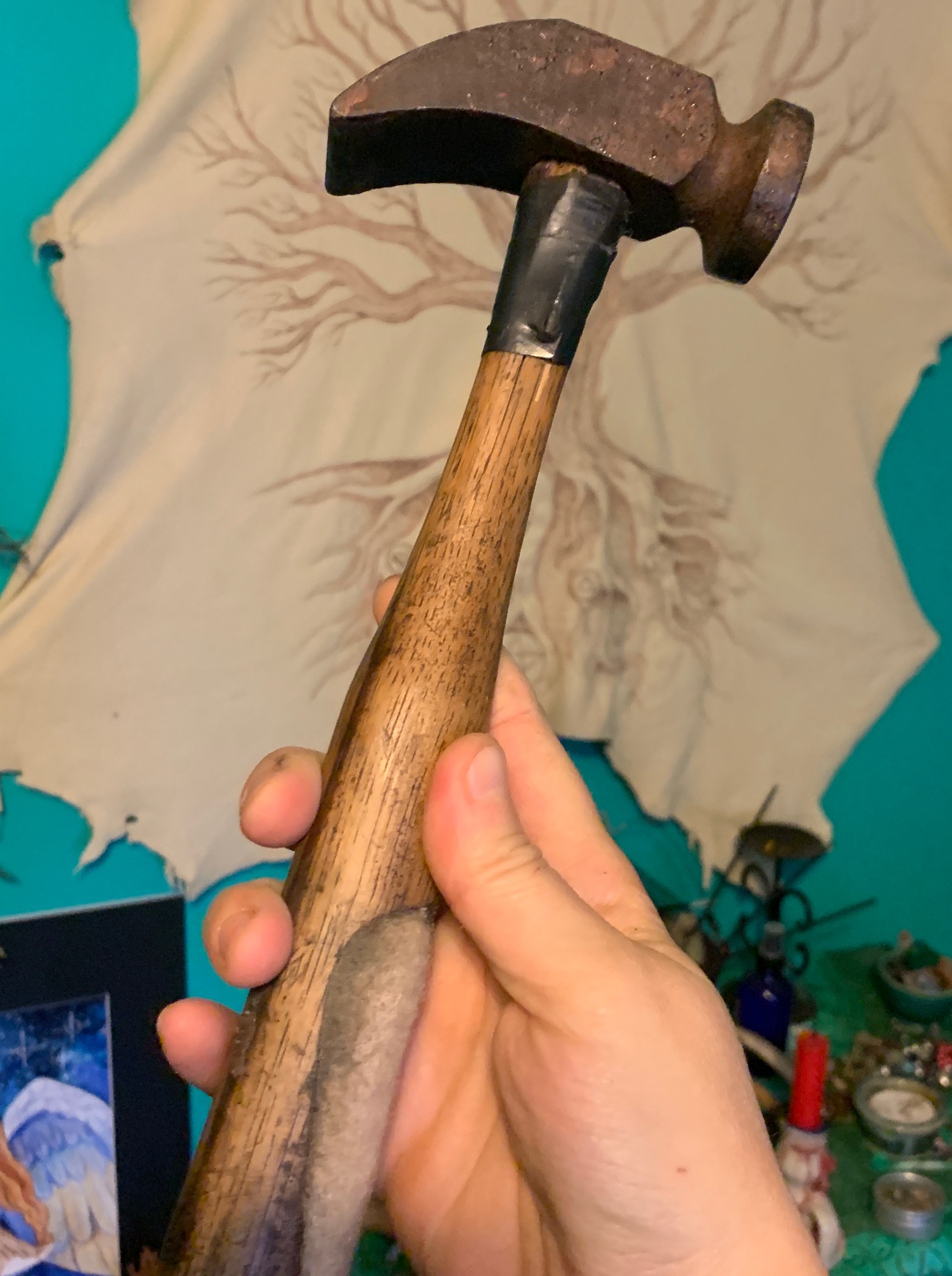
Browsing an antique store a year ago, I found a wonderful shoemaking hammer. It was an interesting shape, and when I held the tool, I could literally feel the connection this tool had had with its previous owner. Whoever had owned this tool had used it well–the handle was worn, a piece of old, soft velcro partially worn off where someone had placed it for a firmer grip. I could sense the resonance of craft and skill in this hammer. I held the unique hammer in my hand, and turned it a few times, knowing that this tool would find a wonderful home in my art studio. But more than that, this tool had a bardic ancestral connection to one of the primary bardic arts I have been pursuing for some time: leatherwork.
In Druidry and broader neopaganism, we often focus on the ancestors in three different directions. The first is ancestors of our blood, which is the most common idea of “ancestor” in modern culture, and represents a connection with the DNA and lineage that we have coursing through our blood and bone. We often also recognize ancestors of the lands where we live (which is critically important for those of us who live on lands that were stolen through colonialization). And we also recognize ancestors of our tradition or spiritual path, for example, in Druidry, the ancient druids and those of the druid revival period are honored as ancestors. I’d like to suggest that for those of us engaged in the creation of bardic arts, we might consider a fourth kind of ancestor: ancestors of our craft. By bardic arts, I mean any creative arts that you practice, which can include literary, musical, movement, art and craft, or others that are less easier to categorize. These are things you create with your hands, your mind, your body, and your heart that allow you to experience the flow of awen (creativity) and create. In my earlier post on this topic, I offered a philosophy of ancestors of the bardic arts in two ways: the first was in considering taking up bardic arts that are tied to your own blood ancestors: what they created, how they created it, and so forth. Thus, you can draw upon ancestral in the choice of a new art form or carry on a family ancestral legacy. The second way I shared was through connecting to previous through previous bardic creations and using those as inspiration. For a clothing maker, this might be being inspired by previous century’s fashions, for a musician, sets of notes created in another time period, or by poets, through the words written in days of old. These flows of inspiration can support the creation of new works today. In today’s post, I want to expand this idea of bardic ancestry and also consider the role of tools and teachings as a third area that we might consider to be part of a “bardic ancestry.”
Tools and Connections
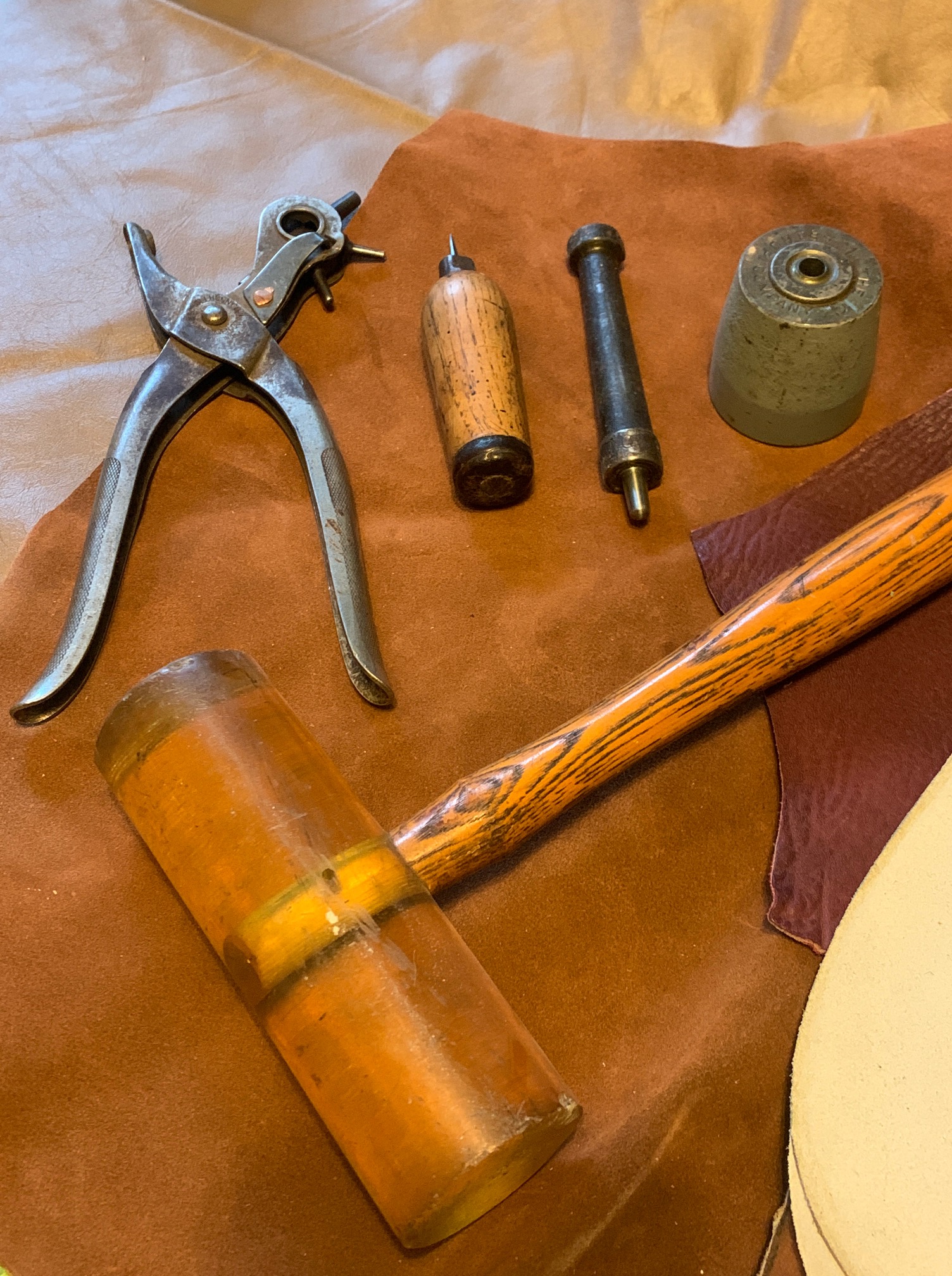
To get back to my shoemaker’s hammer, part of the reason that I was so excited to find this hammer is that this isn’t the first set of old and well-loved tools that I’ve encountered. In fact, the first set of tools set me on the path of leatherwork six years ago. The journey into leatherwork was an unexpected one, one that almost fell in my lap. It started with Yankee Shoe Repair, which was an icon in my hometown for over 100 years. I remember going into this bright, wonderful store when I was a child with my grandmother and looking at all of the patent leather shoes that they made there. In late 2013, the proprietor, Carmel Coco, had passed away and nobody in his family decided to continue his legacy. According to the article linked above, Carmel had given up other opportunities, including going to the conservatory for music, so that he could dedicate his life to leathercraft and continue his family’s business. In early 2014, Yankee Shoe Repair went up for auction. My parents, who are artists themselves, went to the auction and ended up purchasing leatherwork tools and much of the remaining leather for me as a birthday gift.
I was delighted with the gift and began to learn in earnest. Leatherwork drew me in deeply because it required a tremendous amount of technical skill to master (which is a welcome challenge) but also, in part, because I did feel like I was in my small way continuing a local ancestral legacy. The tools that I held in my hands and worked with, such as punches, a beautiful bakelite hammer, and a lovingly crafted handmade awl, weren’t just any tools, they were special tools that came from a special place and that needed to be honored.
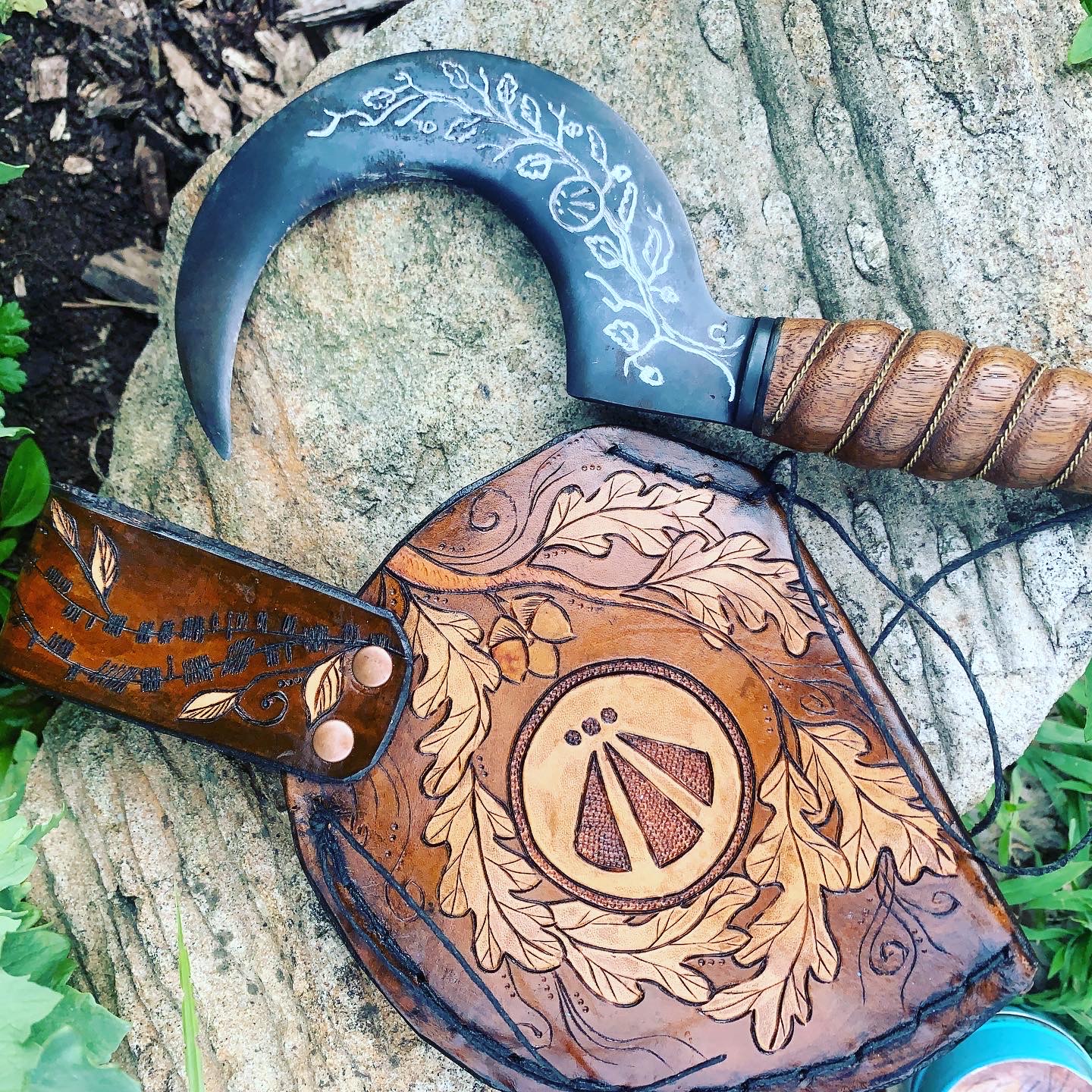
After spending time with these tools, learning how they work (mostly through books and youtube videos), I have developed my own relationship with them. These tools of my craft have a spirit of their own. They have presence. I can feel the weight of the years of use in them, guiding my hand.
I think, given time, my newer tools that I purchased to supplement the ones that my parents bought will take on their own energy and spirit. But that will come only after years of use and relationship building.
I suspect that many of us may have an opportunity to connect with old tools of a bardic art, or even have those tools come to us in unexpected ways. My suggestion is this: If you are going to start a new bardic art, see if you can find some older, well-loved, and well-made tools. Perhaps this is an older instrument, set of songbooks, old wooden palate, and so forth. connecting with the tools of previous masters of the craft offers you what I can only describe as an energetic connection into your craft. You still have to put in the work, practice, and cultivate your technical skills. But using those tools gives you something that is simply not present, and I can only describe it as a bardic ancestral connection.
Teachings and Techniques
The other way in which I see this ancestral bardic connection flowing is through a different kind of legacy–a legacy of teaching and learning. Techniques and teachings are refined, passed on, and shared with students. This might be from a physical teacher to student (and certainly, this was the only way it was done in days of old), or, it might be through preserved books, teachings, and recorded lectures. I see this as another ancestor of bardic craft connection: if someone has decided to pass what they know on, you are carrying that legacy of instruction with you each time you use those techniques and skills taught.

It is not easy to find local leatherworkers willing to teach you or local leatherwork classes. I have only had the opportunity of taking one in-person class in leatherwork (at the North American Bushcraft School) and one more via purchased video (the DVD from Jason Hovatter on Scandanavian Turnshoes). Those were both fairly recent in the last few years–and before and since then, I’ve been mostly on my own. The thing about leatherwork is that it does require huge amounts of technical skill, and no amount of “messing around” with the tools will teach you certain things you need to know. You need to use the established techniques to be successful. For me, filling in the in-person gaps was the books and teaching legacy of Al Stohlman. Al Stohlman and his wife Ann revolutionized leatherwork, producing over 30 incredible books that are literally illustrated in leather. These books teach you everything you need to know about techniques, construction, how to use and care for your tools, and more. The impact of these books on my technical skill and how much they have taught me (and how much I still have to learn from them) is incredible. Thus, the other clear bardic ancestors I honor in leathercraft is Al and Ann Stohlman.
I suspect that many of us who are interested in taking up a particularly technical art form may eventually find those kinds of sources–teachers, either direct or indirect–which help us radically shape our craft and build technique. Those kinds of inspirational figures are worthy of honor and respect.
Honoring the Ancestors of the Bardic Arts

Now I’ve offered four ways–two in the last post, and two in this post–to think about bardic ancestors and honoring those ancestors. But what might this look like in practice? I’ll share a few ideas, although I suspect that different bardic art forms may require their own kinds of adaptations).
- Honoring the tools of the craft. Because I am working with tools that carry a legacy, I take a moment at the start of a new project or when I pick up my tools for a creative session to honor them. I have a moment of silence where I simply feel the tools, hold them, and express gratitude for them. It’s not any kind of big ritual, but simply acknowledgment and gratitude. Even if you aren’t working with legacy tools, I think it’s a good practice to take a moment to honor the tools–the raw materials they were created from and their support of your work.
- Honoring your hands and body as a tool of creation. If you are a dancer or singer or use your body in some way to create, you might also think about the ancestral legacy flowing through your veins–that voice came from some genetic combination, the hands that were shaped from the genetic material of previous ancestors, etc.
- Ancestor Shrine in your place of creation. As with other ancestors, you might create a small altar or shrine to honor your ancestors of the craft. This could be set up in a place where you create. It doesn’t have to be anything fancy or elaborate, but a simple acknowledgment of the lineages and crafting traditions that you follow.
- Ancestor work at Samhain. For any of the ancestor work that you do at Samhain or other parts of the year, consider including the ancestors of your bardic crafts. For example, I usually do an ancestor altar, dumb supper, and ancestor ritual of some kind as a way to honor my ancestors (sometimes this is with a grove, and sometimes solo). Consider adding these ancestors in and revering them in the same way you would other ancestors in your spiritual practice.
- Improve your skill and dedicate yourself to your craft. I think that another way that you can honor the ancestors of the bardic arts is by dedicating yourself to developing technical skill and eventual mastery. If you are using their tools, techniques, and approaches, applying these well is a form of honor.
- Naming and honoring. You might name a piece after an ancestor or create something that honors the ancestors of your bardic arts in a specific way.
A week ago, my new leather sewing machine arrived. The machine represents a huge step forward in me deepening my craft of leatherwork. It allows me to move in new some exciting new directions. I named the machine “Coco” in honor of my ancestors. I hope that this post has inspired you in some new directions. I am happy to continue to share deep thoughts on the bardic arts–sometimes they seem a bit “left out” in our spiritual discussions in Druidry, but I think they are so critical to our paths. Blessings to all.
PS: I will be taking several weeks off from blogging and will resume blogging on the Winter Solstice. Starting in 2021, I’m also planning on starting to release a quarterly email newsletter. This will feature some of my favorite writing, new artwork, and other news about my work (such as my upcoming Sacred Actions book being released by Shiffer Publishing in 2021!) If you are interested in signing up, please visit: https://www.druidsgardenart.com/mailing-list/
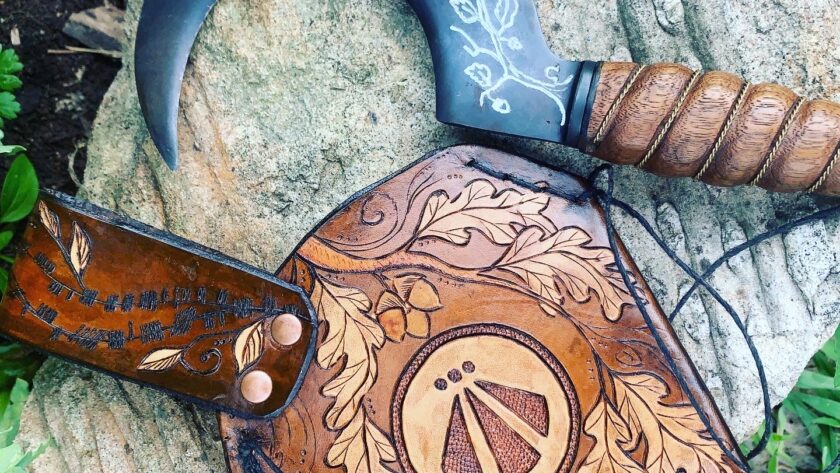


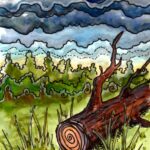

Reblogged this on Blue Dragon Journal.
Thank you for the reblog, Eliza! 🙂
Hello! Your current article really connected with me. I started collecting discarded weaving looms about 10 yrs ago as they seemed to find their way to me. I had no idea how they worked but loved the look and functionality of them. Eventually a weaver in a local weaving guild Id joined took me under her wing and taught me (a math challenged person) how to weave. In the process Ive definitely spent a lot of time thinking of this ancient craft which has hardly changed much since it was started 1000s of yrs ago. Luckily I now can already a draft and actually warp a loom and produce some cloth! So I often do feel a link down the ancestral line when I weave. Thank you for your lovely article. Regards Monique
On Sun, Nov 22, 2020, 6:56 AM The Druid’s Garden wrote:
> Dana posted: ” Browsing an antique store a year ago, I found a wonderful > shoemaking hammer. It was an interesting shape, and when I held the tool, > I could literally feel the connection this tool had had with its previous > owner. Whoever had owned this tool had used ” >
Hi Kiwikeeper,
I love this story about your looms. Those looms must have such a rich history! I love how you shared that weaving is so ancient and not much has changed. I think that is probably true about a lot of traditional crafts…wood carving, weaving, leatherwork….the materials require certain tools, and once those tools are perfected, no reason to change! Thank you :).
Reblogged this on Paths I Walk.
Thank you for the reblog, Paula! 🙂
Hello, Dana 🙂 Your leatherwork is absolutely wonderful! 🙂 I understand your delight at finding such beautiful, lovingly handled tools and feeling the energy they are imbued with.. Thank you for this blog. 🙂
When I discovered the Native American style flute it was love at first listen 🙂 I actually tracked the instrument’s name down from a long list of instruments on a CD, and found an unfamiliar name.. It’s been a love affair since that moment, and this instrument is vital in my life and acts as a conduit for me sending my love out into the world.
I ended up buying so many flutes (Eek!), as I love their different voices, that I arrived at a place where I knew I had to, and I actually really yearned to, craft my own. I’ve made quite a few now, perhaps 7 or so, and I love the process of crafting them.. I pick up driftwood and fallen branches from trees I have grown from seed myself, so there is that gratitude for their gift and love already instilled in the flute. I honour the ancestors of this flute type’s original creators by honouring the instrument completely. I play it as my prayer, always with focus and intention, and people say it brings them deep peace or takes them on a welcome journey….
Honouring the tool of my creativity to me means honouring the flute itself, as this beautiful thing creates music through me, and I through it, so I am working my way through making them each their own unique handmade and felted flute quiver. For the same reason, I made my Medicine Drum it’s own felted drum tote bag. From that followed the opportunity to work together two of my creative pursuits, felting, and the drawing of personalised mandalas. A lovely Drum Journey facilitator loved my Drum Bag and I loved her workshop, so we gifted one other an energy exchange. I was able to attend another of her beautiful workshops, and in return I created a very personal felted Drum Bag for her based on a ‘mandala’ I’d drawn in meditation for her.
Those gifts of creativity are so heartwarming, especially when given as a way of thanking someone for their good ‘work’, or their beautiful energy. It all merges into that happy pool of creativity. 🙂
I realised, too, that lately I’ve been on a bit of a mission trying to track down the perfect home to house my flute tools.. I want something that not only holds all my most-used and cherished tools in one place, but that does it in a way that protects them from damage and acknowledges their worth. I think I’ve found such a thing, in an old cutlery canteen which can be reconfigured to hold many items in their own space.. and I think that perhaps I will create a mini altar within that canteen, so that every time I open it I’m reminded of this huge blessing and feel gratitude.
I truly love thanking the tools… A deeply moving thing occurred for me shortly after I’d attended a workshop facilitated by a casual friend who later became a very dear friend. Her mandala workshop literally un-stopped my ‘creativity champagne cork’! I believe I was ready to work on something ‘vital’, but I also believe that the ‘Blessing the Materials’ meditation we did to merge our energy with our tools’ also worked its magic. and I am forever grateful!
Thank you so much for sharing you magical flute story, shewhoflutesincaves! I love to hear about the gratitude you have for your tools, for creating them, and for sharing them. Do you have a place where you share photos of your flutes? I would love to see a flute made from driftwood, etc. Thank you so much for sharing!
Thank you, Dana 🙂 I haven’t really done much posting except on the Native American Flute making FB group, but I do have a wordpress blog… very rarely used. I will post something about flutes on there as soon as I am able. They deserve a blog of their own. 🙂
Thank you very much for this. I have understood that one of the best way to honour and remember ancestors is really to “Do” “make” something of practical, dedicating the effort to them.
best regards
Daniel
Hi Daniel, yes, indeed! Thanks for reading and sharing ;).
[…] ancestors of the tradition (these three are described more in this post). I also like to honor my ancestors of craft. Participants may want to give some consideration to which ancestors or groups of ancestors they […]